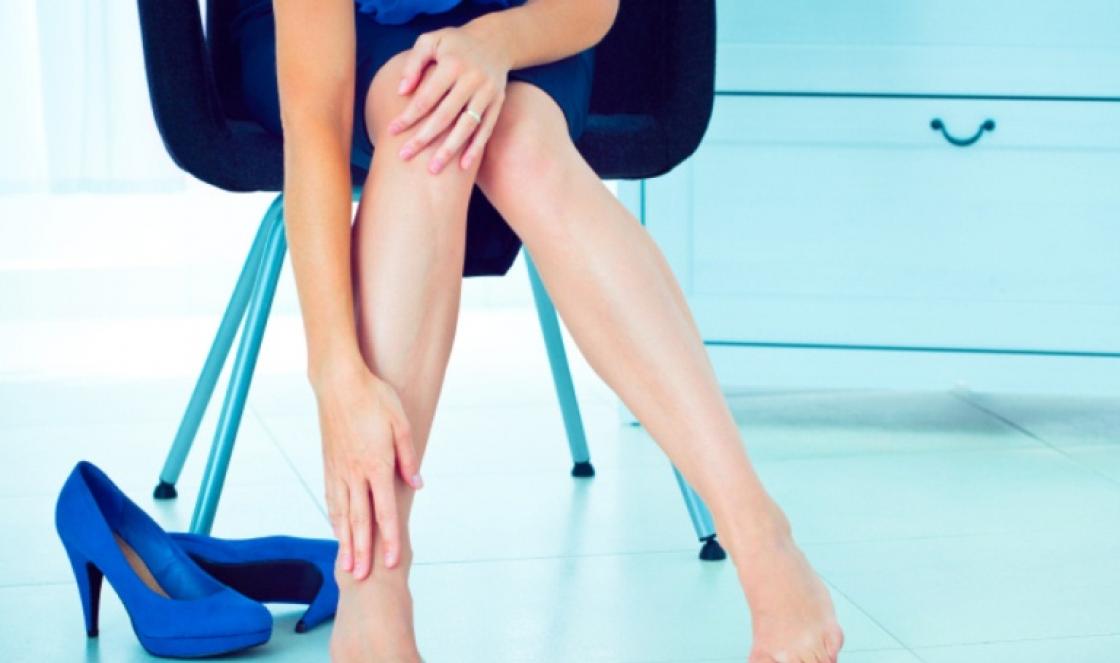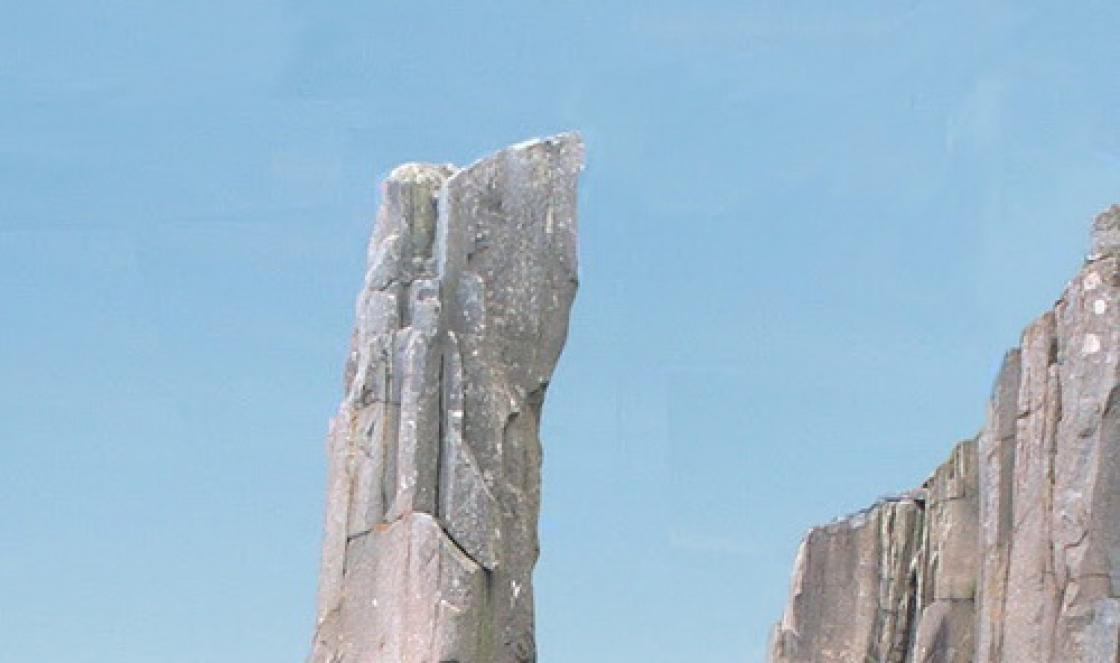Using simulator "Bison" The muscles of the arms and shoulder girdle are effectively loaded, providing all kinds of spatial movements. Listed below are the muscle groups responsible for certain movements of the arms and shoulder girdle.
Belt movement upper limb forward (MUSCLE GROUP A1)
1. Pectoralis major muscle
2. Pectoralis minor muscle
3. Serratus anterior muscle
Backward movement of the upper limb girdle (MUSCLE GROUP A2)
1. Trapezius muscle
2. Rhomboid major and minor muscles
3. Latissimus dorsi
Upward movement of the upper limb girdle (MUSCLE GROUP A3)
1. Upper trapezius muscles
2. Levator scapulae muscle
3. Rhomboid muscles
4. Sternocleidomastoid muscle
Downward movement of the upper limb girdle (MUSCLE GROUP A4)
1. Pectoralis minor muscle
2. Subclavius muscle
3. Lower bundles of trapezius muscle
4. Inferior teeth of the serratus anterior muscle
Internal rotation of the scapula (MUSCLE GROUP A5)
1. Pectoralis minor muscle
2. Lower part of the rhomboid major muscle
External rotation of the scapula (MUSCLE GROUP A6)
1. Serratus anterior muscle
2. Teres major muscle
Shoulder abduction (MUSCLE GROUP B1)
1. Deltoid muscle
2. Supraspinatus muscle
Shoulder adduction (MUSCLE GROUP B2)
1. Infraspinatus muscle
2. Teres minor muscle
3. Long head of the triceps brachii muscle
4. Coracobrachialis muscle
Shoulder flexion (MUSCLE GROUP B3)
1. Deltoid
2. Pectoralis major
3. Coracobrachialis muscle
4. Biceps shoulder
Shoulder extension (MUSCLE GROUP B4)
1. Deltoid muscle
2. Latissimus dorsi muscle
3. Infraspinatus muscle
4. Teres minor muscle
5. Teres major muscle
6. Long head of the triceps brachii muscle
Shoulder pronation (MUSCLE GROUP B5)
1. Subscapularis muscle
2. Pectoralis major muscle
3. Deltoid muscle
4. Latissimus dorsi
5. Teres major muscle
6. coracobrachial
Shoulder supination (MUSCLE GROUP B6)
Forearm flexion (MUSCLE GROUP B1)
1. Biceps brachii
2. Brachialis muscle
3. Brachioradialis muscle
4. Pronator teres
Forearm extension (MUSCLE GROUP B2)
1. Triceps brachii
Pronation of the forearm (MUSCLE GROUP B3)
1. Pronator teres
2. Pronator quadratus
3. Brachioradialis muscle
Supination of the forearm (MUSCLE GROUP B4)
1. Biceps brachii
2. Supinator muscle
3. Brachioradialis muscle
Wrist flexion (MUSCLE GROUP G1)
1. Palmaris longus muscle
2. Flexor carpi radialis
4. Flexor digitorum superficialis
5. Flexor digitorum profundus
6. Flexor pollicis longus
Wrist extension (MUSCLE GROUP G2)
1. Extensor carpi radialis longus
2. Extensor carpi radialis brevis
4. Extensor digitorum
5. Extensor of the little finger
6. Extensor index finger
7. Extensor pollicis longus
Wrist adduction (MUSCLE GROUP G3)
Abduction of the hand (MUSCLE GROUP G4)
1. Flexor carpi radialis
2. Extensor carpi radialis longus
3. Extensor carpi radialis brevis
4. Longus muscle abductor thumb
5. Abductor pollicis longus muscle
6. Extensor pollicis longus
7. Extensor pollicis brevis
Finger flexion (MUSCLE GROUP D1)
1. Superficial flexor digitorum
2. Flexor digitorum profundus
3. Flexor pollicis longus
4. Vermiform muscles
5. Palmar interosseous muscles
Finger extension (MUSCLE GROUP D2)
1. Extensor digitorum
2. Long and short extensors of the thumb
3. Extensors of the index finger and little finger
4. Dorsal interosseous muscles
Movement of the thumb (MUSCLE GROUP D3)
1. Abductor pollicis brevis muscle
2. Flexor pollicis brevis
3. Muscle that opposes the thumb
4. Adductor pollicis muscle
Little finger movements (MUSCLE GROUP D4)
1. Palmaris brevis
2. Abductor digiti minimi muscle
3. Flexor pollicis brevis
4. Opponus little finger muscle
60. Muscles that abduct and adduct the shoulder.
Shoulder abducted: deltoid muscle, supraspinatus muscle.
Deltoid
Supraspinatus muscle starts from supraspinatus fossa scapula and the fascia covering it, and is attached to the greater tubercle humerus and partly to the capsule of the shoulder joint. The function of the muscle is to abduct the shoulder and tighten the joint capsule of the shoulder joint.
Lead shoulder: pectoralis major muscle, latissimus dorsi muscle, subscapularis muscle, infraspinatus muscle.
Pectoralis major muscle
Latissimus dorsi muscle
Subscapularis muscle
Infraspinatus muscle
61. Muscles that supinate and pronate the shoulder.
Rotate the shoulder outward: deltoid muscle (posterior bundles), teres major muscle, infraspinatus muscle.
Deltoid starts from the clavicle (anterior part of the muscle), acromion (middle part) and the spine of the scapula (posterior part), and attaches to the deltoid tuberosity of the humerus. If the front and back parts alternately work, then the upper limb moves forward and backward, i.e. flexion and extension. If the entire muscle tenses, then its front and back parts form a resultant force, the direction of which coincides with the direction of the fibers of the middle part of the muscle, helping to abduct the shoulder to a horizontal level.
Teres major muscle starts from the lower angle of the scapula and is attached to the crest of the lesser tubercle of the humerus, often by one tendon from the latissimus dorsi muscle. When contracting, the teres major muscle acts as a rounded eminence when the pronated shoulder is adducted. The function of the muscle is to adduct, pronate and extend the humerus.
Infraspinatus muscle starts from the infraspinatus fossa of the scapula. In addition, the origin of this muscle is the infraspinatus fascia. Attaches to the greater tubercle of the humerus. The function of the infraspinatus muscle is to adduct, supinate and extend the shoulder in shoulder joint.
Rotate the shoulder inward: deltoid muscle (anterior bundles), pectoralis major muscle, latissimus dorsi muscle, teres major muscle, subscapularis muscle.
Deltoid
Pectoralis major muscle starts from the medial half of the clavicle (clavicular part), the anterior surface of the sternum and the cartilaginous parts of the upper five or six ribs (sternocostal part), the anterior wall of the rectus sheath (ventral part) and is attached to the crest of the greater tubercle of the humerus. It refers to the muscles that extend from the trunk to the free upper limb. This muscle pulls the scapula forward and away from the spinal column. But this function is secondary. Basically, it is involved in the movements of the humerus. If the torso is fixed, then this muscle adducts, pronates and flexes the humerus.
Latissimus dorsi muscle starts from the spinous processes of the lower five to six thoracic vertebrae, all lumbar, upper sacral vertebrae and from the posterior part of the iliac crest, with four teeth from the four lower ribs, attaches to the crest of the lesser tubercle of the humerus. By adducting and penetrating the humerus, it causes the lowering of the upper limb girdle and adduction of the scapula to the spinal column; that part of the muscle that starts from the ribs can lift them and have some effect on increasing the volume of the chest during inhalation.
Teres major muscle
Subscapularis muscle located on the anterior surface of the scapula, filling the subscapular fossa, from which it begins. The muscle is attached to the lesser tubercle of the humerus. It produces shoulder adduction; acting in isolation, it is its pronator.
59. Muscles that flex and extend the shoulder.
Bend the shoulder: deltoid muscle (anterior bundles), pectoralis major muscle, biceps brachii muscle, coracobrachialis muscle.
Deltoid starts from the clavicle (anterior part of the muscle), acromion (middle part) and the spine of the scapula (posterior part), and attaches to the deltoid tuberosity of the humerus. If the front and back parts alternately work, then the upper limb moves forward and backward, i.e. flexion and extension. If the entire muscle tenses, then its front and back parts form a resultant force, the direction of which coincides with the direction of the fibers of the middle part of the muscle, helping to abduct the shoulder to a horizontal level.
Pectoralis major muscle starts from the medial half of the clavicle (clavicular part), the anterior surface of the sternum and the cartilaginous parts of the upper five or six ribs (sternocostal part), the anterior wall of the rectus sheath (ventral part) and is attached to the crest of the greater tubercle of the humerus. It refers to the muscles that extend from the trunk to the free upper limb. This muscle pulls the scapula forward and away from the spinal column. But this function is secondary. Basically, it is involved in the movements of the humerus. If the torso is fixed, then this muscle adducts, pronates and flexes the humerus.
Biceps The shoulder has two heads, long and short. The long head starts from the supraglenoid tubercle of the scapula, and the short head starts from the coracoid process. The muscle is attached to the tuberosity of the radius and to the fascia of the forearm. This muscle is biarticular. It flexes the shoulder and fixes the head of the humerus in this joint; in relation to the elbow joint, it is a flexor and supinator of the forearm. Since the heads of the biceps muscle begin on the scapula at some distance from each other, their functions in relation to the movement of the shoulder are not the same: the long head flexes and abducts the shoulder, the short head flexes and adducts it. In relation to the forearm, the biceps brachii muscle is a vigorous flexor, as it has a significant leverage.
Coracobrachialis muscle starts from the coracoid process of the scapula, fuses with the short head of the biceps muscle and the pectoralis minor muscle, and attaches to the humerus at the level of the deltoid muscle attachment. The function of the coracobrachialis muscle is not only to move the shoulder anteriorly, but also to adduct and pronate it.
Extend the shoulder: deltoid muscle (posterior bundles), triceps brachii muscle (long head), latissimus dorsi muscle, teres major muscle, infraspinatus muscle.
Deltoid
Triceps brachii has three heads: long, medial and lateral. The long head starts from the subarticular tubercle of the scapula, and the medial and lateral ones start from the posterior surface of the humerus and intermuscular septa. All three heads come together into one tendon, which attaches to the olecranon process of the ulna. The muscle, when contracting, causes extension and adduction in the shoulder joint (long head) and extension in the elbow. The long head of the triceps brachii muscle can function independently.
Latissimus dorsi muscle starts from the spinous processes of the lower five to six thoracic vertebrae, all lumbar, upper sacral vertebrae and from the posterior part of the iliac crest, with four teeth from the four lower ribs, attaches to the crest of the lesser tubercle of the humerus. By adducting and penetrating the humerus, it causes the lowering of the upper limb girdle and adduction of the scapula to the spinal column; that part of the muscle that starts from the ribs can lift them and have some effect on increasing the volume of the chest during inhalation.
Teres major muscle starts from the lower angle of the scapula and is attached to the crest of the lesser tubercle of the humerus, often by one tendon from the latissimus dorsi muscle. When contracting, the teres major muscle acts as a rounded eminence when the pronated shoulder is adducted. The function of the muscle is to adduct, pronate and extend the humerus.
Infraspinatus muscle starts from the infraspinatus fossa of the scapula. In addition, the origin of this muscle is the infraspinatus fascia. Attaches to the greater tubercle of the humerus. The function of the infraspinatus muscle is to adduct, supinate and extend the shoulder at the shoulder joint.
ENCYCLOPEDIA OF MEDICINE
ANATOMICAL ATLAS
SECTION >
Movements in the shoulder joint
The shoulder joint is classified as spherical. It has an almost 360° range of motion for maximum flexibility. The muscles of the shoulder girdle not only provide
these movements, but also increase the stability of the joint.
Movements in the shoulder joint occur around three axes: horizontal, passing through the center of the glenoid cavity of the scapula; perpendicular to it is the anteroposterior one, passing through the head of the humerus, and vertical, running along the body of the humerus (with the arm lowered). This allows for flexion and extension, abduction (movement away from the body) and adduction (movement towards the body), as well as medial (internal) and lateral (external) rotation (rotation). The combination of these movements results in a circular movement of the limb (circumduction).
MUSCLES PROVIDING SHOULDER MOVEMENTS Many of the muscles involved in these movements are attached to shoulder girdle(to the collarbones and shoulder blades). The places of muscle attachment to the scapula are on its anterior and posterior surfaces and the coracoid process. Some muscles come directly from the body (the pectoralis major and the latissimus dorsi). Other muscles are also involved in the movement of the humerus, including those that do not have direct contact with it (for example, the trapezius muscle). They do this by moving the scapula and moving the shoulder joint.
Shoulder muscles (front view)
Akromion
Lateral end of the spine of the scapula, insertion point of the deltoid muscle.
Deltoid muscle (cut)
Powerful arm flexor. Specialized bundles of this muscle are involved in adduction. rotation. flexion and straightening of the arm.
Pectoralis major muscle (cut)
Plays an important role in flexion and adduction
Biceps brachii
Weak flexor of the arm at the shoulder joint, assists in flexion.
Median nerve (cut)
Innervates many muscles of the forearm.
Brachioradialis muscle
Helps flex the forearm, especially when it is already partially flexed.
Movements in the shoulder joint
A The adduction of the arm is carried out by the pectoralis major muscle and latissimus muscle back, abduction - supraspinatus and deltoid muscles.
A The muscles that perform lateral rotation of the shoulder are the infraspinatus, teres minor and posterior deltoid bundles. Medial rotation is produced by the muscles of the rotator cuff group.
A Flexion (forward movement) is performed by the biceps, coracobrachialis, deltoid and large muscles. pectoral muscles. Extension (backward movement) is produced by the posterior fibers of the deltoid muscle, the latissimus dorsi muscle and the teres major muscle.
And Circumduction (circular movement) is a combination of all these movements. Its possibility is due to the stabilizing effect of the clavicle, which holds the head of the humerus in the glenoid cavity of the scapula. Circumduction is accomplished by alternating contraction of all muscle groups.
Coracoid process
The protrusion of the scapula that serves as the point of insertion of the flexors.
Subscapularis muscle
Stabilizes the shoulder joint and rotates the humerus
Coracobrachialis muscle
flexor muscle
Teres major muscle
Powerful extensor arm muscle
Brachial artery (dissected)
Main artery of the arm
Pronator teres
Weak elbow flexor
< При отвернутой кзади дельтовидной мышце становятся видны многие другие важные мышцы-сгибатели плеча и их места прикрепления к плечевому суставу.
Latissimus dorsi muscle
The extensor arm muscle also helps adduct the arm.





